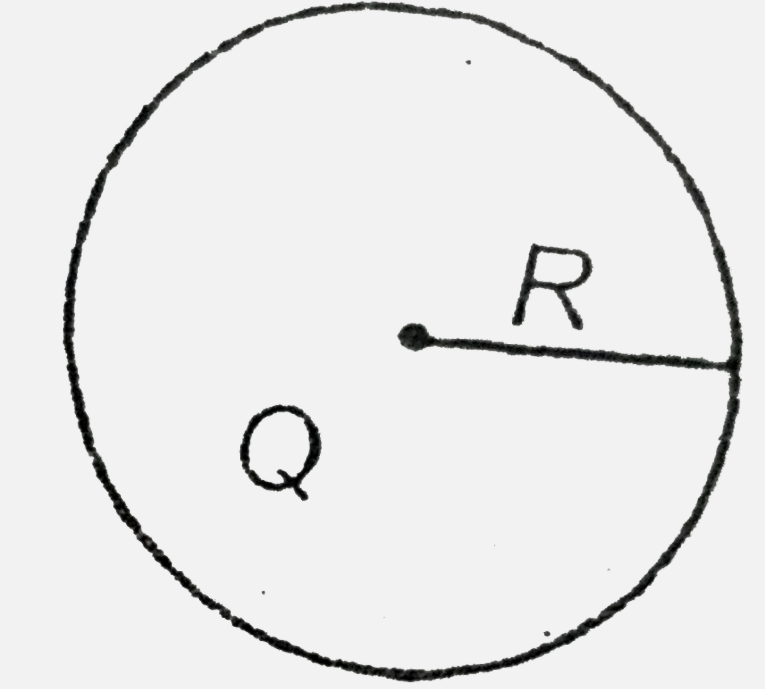A spherical conductor A of radius r is placed concentrically inside a conducting shell B of radius (Rt>r) . A charge Q is given to A, and then A is joint to B by a metal wire. The charge flowing from A to will be :
A
Q(RR+r)
B
Q(rR+r)
C
Q
D
zero
Text Solution
The correct Answer is:C
|
Topper's Solved these Questions
Similar Questions
Knowledge Check
A spherical conductor A of radius r is placed concentrically inside a conducting shell B of radius R(R>r). A charge Q is given to A , and then A is joined to B by a metal wire. The charge flowing from A to B will be
AQ(RR+r)BQ(rR+r)CQDZeroA conducting sphere A of radius a ,with charge Q , is placed concentrically inside a conducting shell B of radius b . B is earthed. C is the common centre of the A and B
AThe field at a distance r from C , where a≤r≤b , is kQr2BThe potential difference between A and B is kQ(1b−1b)CThe potential at a distance r from C, where a≤r≤b, is kQ(1r−1b)DAll options are correctA1 is a spherical conductor of radius (r) placed concentrically inside a thin spherical hollow conductor A2 of radius (R). A1 is earthed and A2 is given a charge +Q then the charge on A1 is -
A–QBQr/RC–rQ/RD–Q(R–r)/R
A conducting sphere of radius R, carrying charge Q, lies inside uncharged conducting shell of radius 2R. If they are joined by a metal wire,
View SolutionInside a charged thin conducting shell of radius R, a point charge +Q is placed as shown in figure potential of shell may be

View SolutionInside a charged thin conducting shell of radius R, a point charge +Q is placed as shown in figure potential of shell may be

View SolutionA conducting sphere of radius R, carrying charge Q, lies inside uncharged conducting shell of radius 2R. If they are joined by a metal wire,
View SolutionA spherical metal shell A of radius RA and a solid metal sphere B of radius RB(<RA) are kept far apart and each is given charge '+Q'. Now they are connected by a thin metal wire. Then
View Solution
